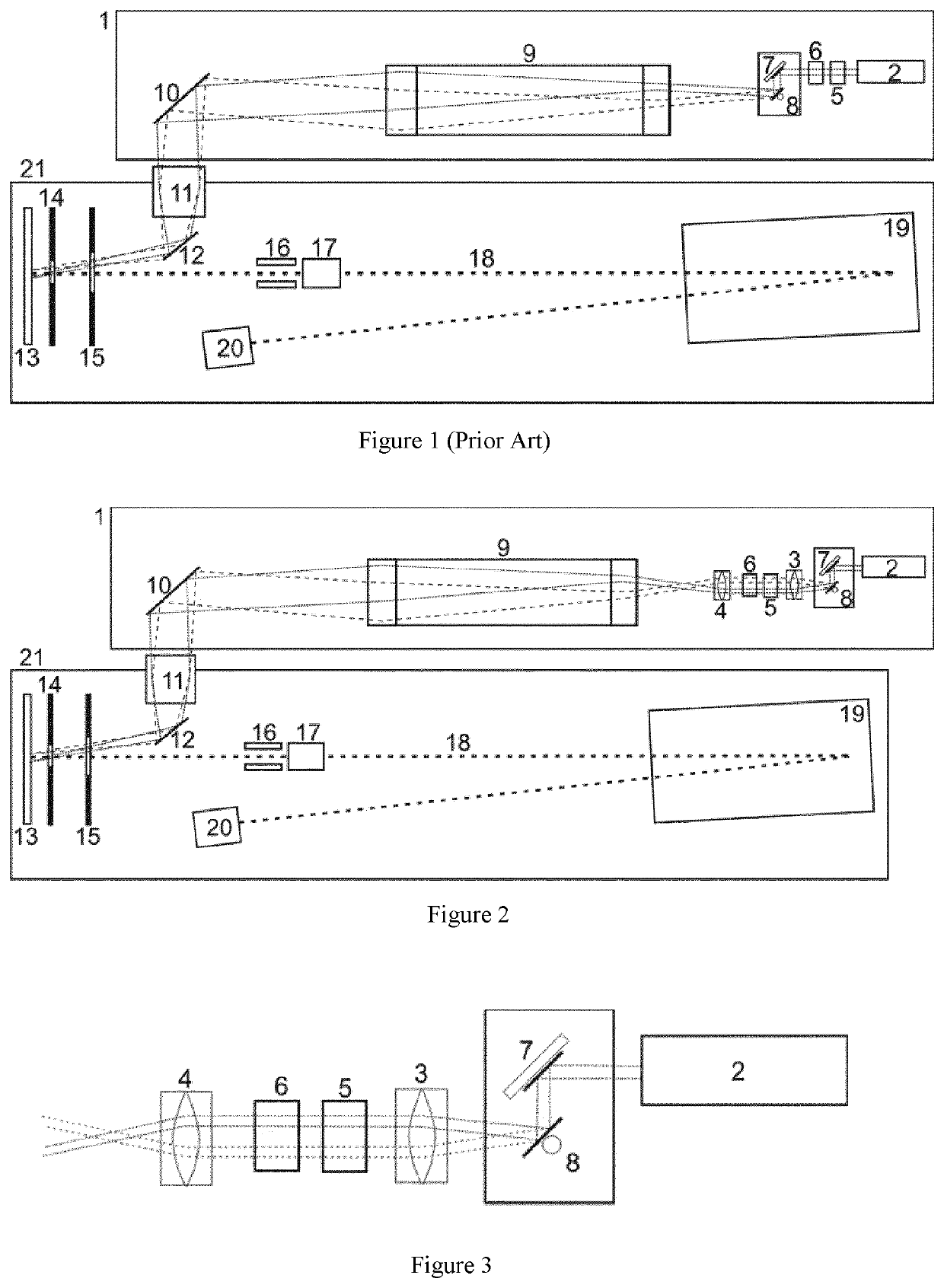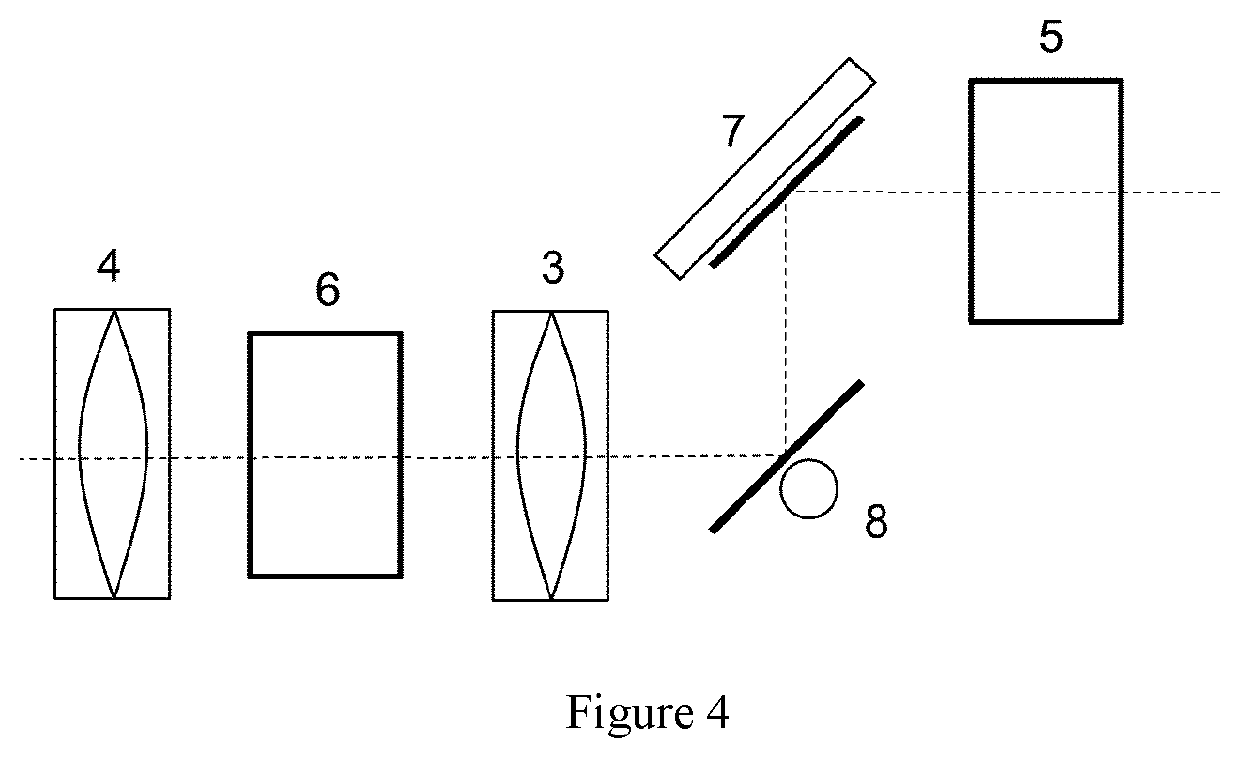Mass spectrometer with a laser desorption ion source, and laser system with a long service life
a laser desorption ion and mass spectrometer technology, which is applied in the field of mass spectrometers with laser desorption ion sources and laser systems with a long service life, can solve the problems of limited service life, site where the absorption continually increases, and beam exit sites of tripling crystals, etc., and achieves the effect of increasing the service li
- Summary
- Abstract
- Description
- Claims
- Application Information
AI Technical Summary
Benefits of technology
Problems solved by technology
Method used
Image
Examples
Embodiment Construction
[0029]FIG. 1 shows a greatly simplified schematic of a MALDI time-of-flight mass spectrometer with a time-of-flight analyzer (21) and a laser system (1) which controls the laser spot position of the light pulse on the sample support plate (13) by means of a mirror system comprising two galvanometer mirrors (7, 8). The laser pulse is generated in the infrared laser (2), its energy is doubled in a doubling crystal (5), and at least partially converted into the UV in a tripling crystal (6). In the mirror system, the UV beam is deflected in both spatial directions by two galvanometer mirrors (7) and (8). The deflected laser beam is then expanded in a Keplerian telescope (9) and shifted parallel as a function of the angular deflection. The mirror (10) directs the exiting laser beam into the very center of the object lens (11), with reduced angular deflection. Depending on the angular deflection, the beam passes through the object lens (11) centrally, but at slightly different angles, thu...
PUM
| Property | Measurement | Unit |
|---|---|---|
| length | aaaaa | aaaaa |
| diameter | aaaaa | aaaaa |
| length | aaaaa | aaaaa |
Abstract
Description
Claims
Application Information
 Login to View More
Login to View More - R&D
- Intellectual Property
- Life Sciences
- Materials
- Tech Scout
- Unparalleled Data Quality
- Higher Quality Content
- 60% Fewer Hallucinations
Browse by: Latest US Patents, China's latest patents, Technical Efficacy Thesaurus, Application Domain, Technology Topic, Popular Technical Reports.
© 2025 PatSnap. All rights reserved.Legal|Privacy policy|Modern Slavery Act Transparency Statement|Sitemap|About US| Contact US: help@patsnap.com


